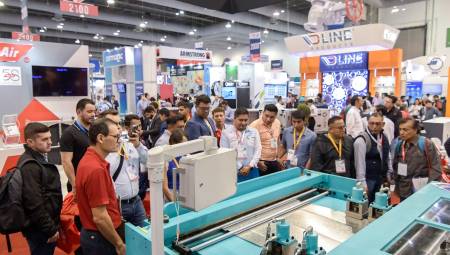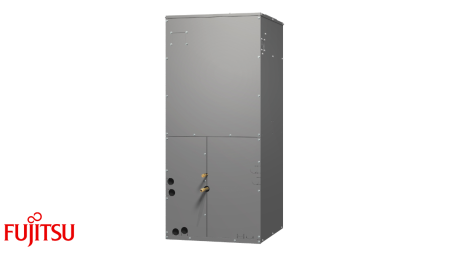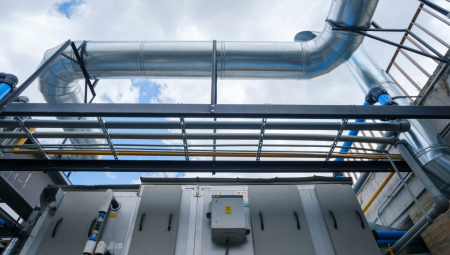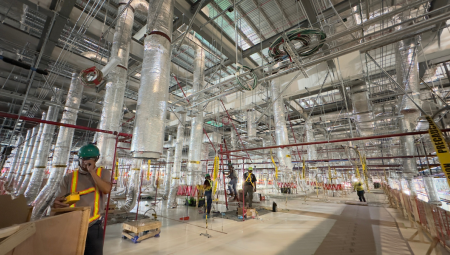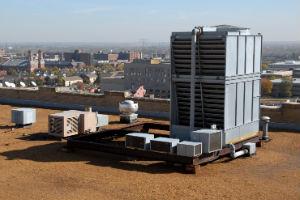 Installing ventilation in a specific place requires previous studies, not only of a technical -economic type, but also climatic and wind in the area of interest, to achieve the expected results.
Installing ventilation in a specific place requires previous studies, not only of a technical -economic type, but also climatic and wind in the area of interest, to achieve the expected results.
by Camilo Botero*
In a previous article, published in ACR LATINOAMÉRICA, I commented that there was a difference in approach, sometimes conflicting, between the roles played by the ecological engineer versus the bioclimatic architect. Especially in what has to do with the issue of achieving comfort conditions in hot and humid climates.
Because many projects are located in tropical areas, thermodynamic laws define the scope that can be given to a bioclimatic approach, based on natural convections and winds. How far can bioclimatic architects go?, because as far as these thermodynamic laws allow.
However, there is a point where the two approaches can coincide and, in fact, there is no theoretical conflict, nor is the second law of thermodynamics violated, and instead very convenient solutions are obtained. That point of confluence is ventilation, which consists of achieving reasonably acceptable conditions for certain applications, mainly of an industrial type or when the climate in the commercial, institutional or domestic installation allows it.
Ventilation is based on taking outside air, sometimes filtered, and taking it inside to remove the sensitive load. Little or nothing serves to remove latent load, since this air already has a high specific humidity (typically 130 grains / lb a.s. in my region), when according to the ASHRAE standard 55, to achieve comfort should have a lower value inside, that is, of the order of 70 grains / lb a.s.
It is necessary to know in detail the internal sensitive loads and the local climatology. The equation with which the air flow is calculated is very simple:
Sensible heat = A constant x Flow rate x An acceptable Delta of T .
In the IP system this equation at sea level is:
q = 1.08 CFM x Delta of T
At a thousand meters of altitude, the density of the air is such that the constant becomes 1.0 and therefore the equation is simplified to:
q = CFM x Delta of T
Clearing this equation has to:
Delta of T = q / CFM
Here we come to the need to make a technical and economic decision: the Delta of T (typically 4ºF or 2ºC) is fixed by calculating the CFM, or the CFMs are fixed waiting for a certain value of the T.
For example, by defining the number of changes per hour and calculating the change in the maximum permissible temperature.
But the final effect does not end here. The feeling of comfort is achieved by means of a combination of the following factors:
- Dry bulb temperature.
- Wet bulb temperature.
- Air velocity over the occupant's body.
- Type of clothing used.
- Balance of mass and energy in the individual.
Normally they result in such large flows that make the projects unfeasible but if, for example, the air vents are located near the operators in a machine that has significant sensitive loads, good results are achieved without investing too much.
Nowadays large ceiling fans have become popular at low revs with frequency inverters that receive signals (temperature, for example; among others), which achieve good results with reasonable costs. However, one of its drawbacks is that the airflow sometimes reaches where it shouldn't; for example in a paper plant where I carried out a project for a cutter in leaves, because the wind speed above 60 feet / min, affects the production.
Natural ventilation
Another way to air condition by ventilation is natural ventilation that is mainly given by two mechanisms:
The first mechanism depends on the winds of each zone, of which their intensity, direction, frequency and schedules must be known.
In my opinion, this system is very uncertain since it cannot be controlled, depends fundamentally on the weather and, generally, has no filtration; that is, the infiltration of dust and other swarmants can be a major problem. However, it cannot be ruled out and today it is used profusely, but it must be accepted that it has no filtration. This system also has no way of carrying the latent load and therefore has no control over the relative humidity.
A second mechanism is natural convection, which is presented as a consequence of the pressure difference generated by the difference in densities between the higher density of air outside and the lower density of air indoors, for example, in a plant with a high sensitive load.
It is quite complicated to calculate this pressure differential, because the temperatures are not constant inside or outside, but result in a few tenths of an inch of water, which makes it very difficult to use filtration, because the pressure drop through the filter cancels the effect of the thermosyphon.
Conclusions
1. If it is possible to use ventilation in any of its forms, mechanical or natural, as long as the possibilities to achieve comfort of this technology are very clear. I have had the opportunity to frequently hear expressions such as "We spent a fortune putting this ventilation and we did not achieve if not 28ºC, when we expected 24ºC!". What they ignore is that to achieve 24ºC the investment owed triple or more, that the energy consumption is 10 times higher (or higher) and that when turning off the ventilation the temperature inside reaches 38ºC.
2. The climatology in each region must be known very well for a specific application, know the profile of hours of peaks of sensitive load inside the area to be ventilated and explore several ventilation alternatives between mechanical and natural.
3. Make one or more psychromometries where the day and night weather appears for several months of the year and the conditions that would be obtained for the sensitive thermal load in the plant.
4. Leave a document signed by the owner or the project manager where it was perfectly established what will be the approximate conditions of temperature, relative humidity, indoor air quality and possible apparent temperature in people.
* Camilo Botero is the current Secretary of the Federation of Ibero-American Associations of Air Conditioning and Refrigeration - FAIAR; he was president of ACAIRE and is president of Camilo Botero Ingenieros Consultores Ltda. He has worked as a teacher in several Colombian universities, guilds and currently in ACAIRE in diploma courses of air conditioning projects, energy efficiency in air conditioning and refrigeration, cogeneration and trigeneration, applied psychometrics, thermodynamics, fluid mechanics, heat transfer and turbomachinery.







